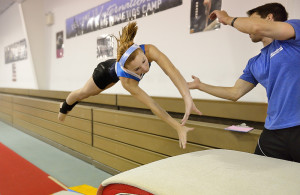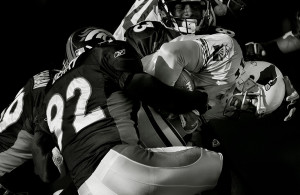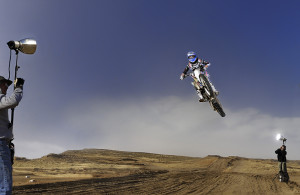Workshop at the Ranch – November 2013 – Your Questions and My Answers
 Hi and welcome to this edition of Workshop at the Ranch (WATR.) Your Questions and My Answers has been incredibly successful. So many great questions roll in via emails from the Contact page on my website that I think we should just keep going. Let’s see what the email bag offered this month.
Hi and welcome to this edition of Workshop at the Ranch (WATR.) Your Questions and My Answers has been incredibly successful. So many great questions roll in via emails from the Contact page on my website that I think we should just keep going. Let’s see what the email bag offered this month.
|
Q… Hi Dave, I am relatively new to photography, have a Nikon D7000 with a 28-300mm lens. I have always been interested in wildlife photography and now after watching your Live Action Horse Racing Photography course on KelbyOne, which was excellent, I am keen to photograph sports that include animals! My question is, what lens would you now recommend I get? I seem to hem and haw between the 70-200mm with a teleconverter as it’s f2.8, or the newer version of the 80-400mm. A… Hi Olwen. Glad you enjoyed the Horse Racing class on KelbyOne www.kelbyone.com The NEW Nikon 80-400 f4.5-5.6 VR II is a superb lens… really sharp and not too heavy which makes it easy to hand hold. It’s 5.6 aperture is OK even for sports if there is some adequate daylight. Moose Peterson loves his 80-400mm…and I regard his voice of experience using it as a top-shelf endorsement. Although I have tested the NEW Nikon 80-400mm lens I do not own one simply because I currently own the Nikon 200-400mm f4.0 lens…which, is incredibly sharp at every focal distance, and you can use a Nikon 1.4x Teleconverter to achieve 550mm and a f5.6 aperture. That being said, your D7000 will give you a similar look with its cropped sensor. I can hand hold the 200-400mm but that choice is not for everyone…get a good monopod, or go with the 80-400mm if you need to be “fleet on your feet” with it. There is a Big price difference, $2,700 for the 80-400mm and $6,700 for the 200-400mm. Both lenses are terrific. Hope this helps you make the right purchase. Adios. Dave |
|
Image #2 Moto Ranger Set-Up … Nikon D3s, ISO400, 1/1250 at f10, Nikon 24-70mm lens, WB 6250K, Two Elinchrom Ranger Speed AS 1100 w/s power packs each with an Pocket Wizard ST4 receiver, and each with a Standard “S” Head each with a custom made Long Throw Reflector, Pocket Wizard FLEX TT5 HyperSync system to wirelessly fire the strobes, an AC3 (remotely allows power adjustments to the power packs) connected to the FLEX TT5 which is connected to the camera’s hot shoe, Manfrotto Lightstands, SanDisk 32G Flash Card. Q… Hey Dave, long time no talk! The “S” Head has a slower flash duration than the “A” Head (action head) which allows a broader window of Flash Duration to use HyperSync. When teamed up with the Pocket Wizard FLEX TT5 the “S” Head works well in HyperSync mode so you can use fast shutter speeds like 1/1000 or 1/1250. The Pocket Wizard FLEX TT5 with HyperSync is “the ideal system” to shoot/strobe action outdoor sports. I sometimes use a custom made Long Throw Reflector when I need an extra “Kick” of light. A standard Elinchrom “Sport Reflector” is most common and works fine, but 25 years ago I had these “Long Throw Reflectors” made for strobing larger basketball and hockey arenas. My custom Long Throw Reflectors give me +1.3 stops more light than the Sport Reflectors. More light without requiring more power…my packs throw light farther and brighter, which is helpful when strobing outdoor sports action.
Take care my friend. Hope this info helps you. Adios. Dave |
 Images #3 Gym Vault … Nikon D800, ISO5000, 1/800 at f2.8, Nikon 24-70mm lens, WB Auto, SanDisk 32G Flash Card. Images #3 Gym Vault … Nikon D800, ISO5000, 1/800 at f2.8, Nikon 24-70mm lens, WB Auto, SanDisk 32G Flash Card.
Q… Hi Dave, I’m beginning my study of photography at the age of 71 after a life in broadcasting. I have 13 grandchildren and lots of really lousy pictures of some beautiful kids. Two questions… 1. Do you still think the D800 is the best camera… or should I spring for the D4. And 2. I see that you are very specific about white balance with kelvin numbers … I haven’t seen that before … How important is that … And how can I learn to incorporate kelvin into my exposures. Thanks mr ambassador, Dan A… Hi Dan. Nice to hear you are starting to pursue photography. Yes, I think the Nikon D800 produces the BEST file out there…especially for the price. I find myself using the D800 as much or more than my D4, even at sports events. Keep in mind I am looking for the very best quality file possible, and I don’t always need 10 frames per second to capture the action moment I want. So much of my current work is for advertising and commercial clients who want the BIG Megapixel file that the D800 produces. Here are just a few things to consider when purchasing a D4 or a D800. The D4 auto focus capabilities is slightly faster than a D800, but not by much. Are you shooting professional sports or those 13 grand children running around the yard and slower youth sports. The higher ISO capabilities of the D4 are remarkable, but seem nearly matched by the much larger file size that the D800 produces. Given a typical poorly lit Gymnastics gym like the one in Image #3, the D800 produced a file that rivaled the D4 at the same ISO of 5000. Keep in mind that the D4 will go much higher in clean ISO past 5000. The D4 gives you 10 frames/second…the D800 is no match at 5 fps… grand kids or Olympic sprinters, how many fps do you really need. The D4 gives you a Voice Memo… you can tag any image by recording a voice memo to it. I use Voice memo on the D4 at every event I shoot. Might be handy to document info of your Grandchildren beyond just having camera data, date, time, etc. The D800 does not have Voice Memo…but wish it did. Regarding using the Kelvin scale for WB. I do use the Kelvin scale for WB about 99.9% of the time. It is more precise for my stylized lighting images, but honestly speaking the Auto WB of both the D800 and D4 is very good. I use the Kelvin because I am picky…and so are my clients…and I hate to spend time doing any PhotoShop correcting when I could be out shooting more pictures. However, for this image I did use Auto WB…Yes, Auto. It worked best in the pulsating/color changing gymnasium lights. Sometimes it is best to use the technology at hand. To learn more about photography from a host of people you might look into KelbyOne. www.kelbyone.com They offer online training courses by a host of great professionals. I also make instructional video classes for them on sports action, Flash photography, Lightpainting and more. Might be worth a look to you. Hope this helps. Take care. Dave
|
 Image #4 Stopped Short … Nikon D1x, ISO500, 1/2000 at f6.3, Nikon 400mm f2.8 with Nikon 1.4x Teleconverter, Gitzo Monopod, SanDisk 128 Megabyte Secure Flash Memory Card. (This image was originally shot in color and converted to Black & White for an ESPN TV show.) Image #4 Stopped Short … Nikon D1x, ISO500, 1/2000 at f6.3, Nikon 400mm f2.8 with Nikon 1.4x Teleconverter, Gitzo Monopod, SanDisk 128 Megabyte Secure Flash Memory Card. (This image was originally shot in color and converted to Black & White for an ESPN TV show.)
Q… I watched your training videos at Scott KelbyOne and I found them amazingly helpful in my sports photography. I am currently photographing high school and college sports for the local newspaper and my sports photo circles keep enlarging! I am learning what editors are looking for in photos and just wanted to thank you for doing the training videos. I also really appreciated your blog article “How to Make It as a Sports Photographer.” I am amazed at how the opportunities are opening up for me now that I’ve been published in our newspaper numerous times. Thank you for the inspiration and training–it is really helpful! Bob A… Hi Bob. I’m glad that you have enjoyed my sports photography video classes on KelbyOne www.kelbyone.com There are more to come. And it’s nice to hear that my WATR article posted April 2013 was also helpful to you. I have devoted a good portion of my life to teaching photographers and encouraging them to make sports photography their career. It’s gratifying for me to know that you and many others have learned something useful and that they are making progress in the industry. I’ve been making a living as a sports photographer for over 30 years now. I still love making pictures of athletes running fast, making catches, breaking records, and winning medals. It’s fun. It’s still a challenge. It’s a good life that God has blessed me with, and I enjoy seeing others achieve their goal and begin working as a professional sports photographer just as I have. NOTE: I actually hold a class with the same title, “How to Make It as a Sports Photographer” at Photoshop World each year. The class is simple, I sit down and talk face to face with as many sports photographers who can fill the conference room and we have a 1 hour conversation of Q and A about how to make a living in this very exciting profession. |
The next Photoshop World is in Atlanta, April 8, 9, and 10, 2014. Maybe I will see you there. Please come up and introduce yourself…and that invitation is extended to anyone of you who has enjoyed my teaching at workshops, KelbyOne, or my website. www.photoshopworld.com
Adios. Dave



